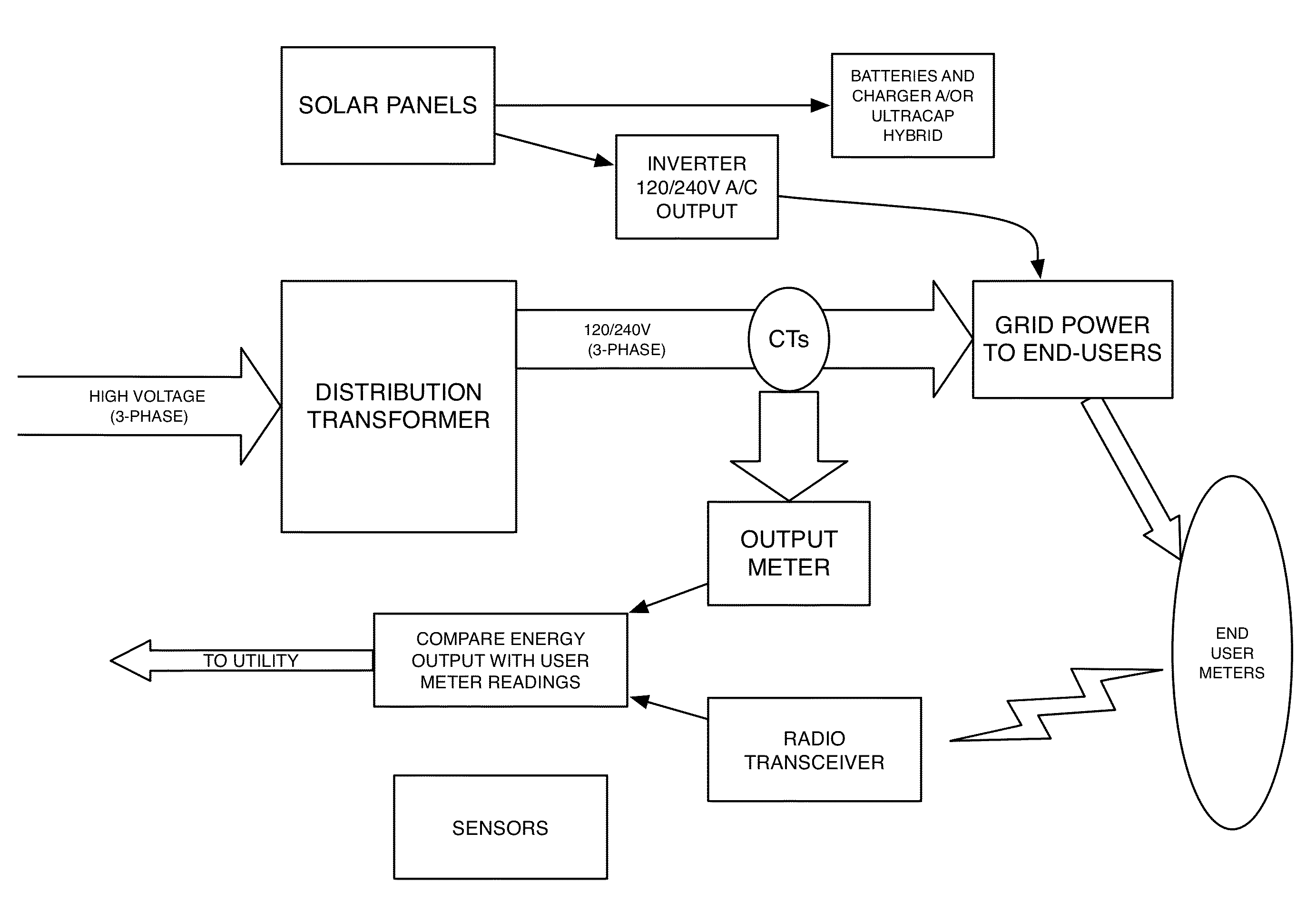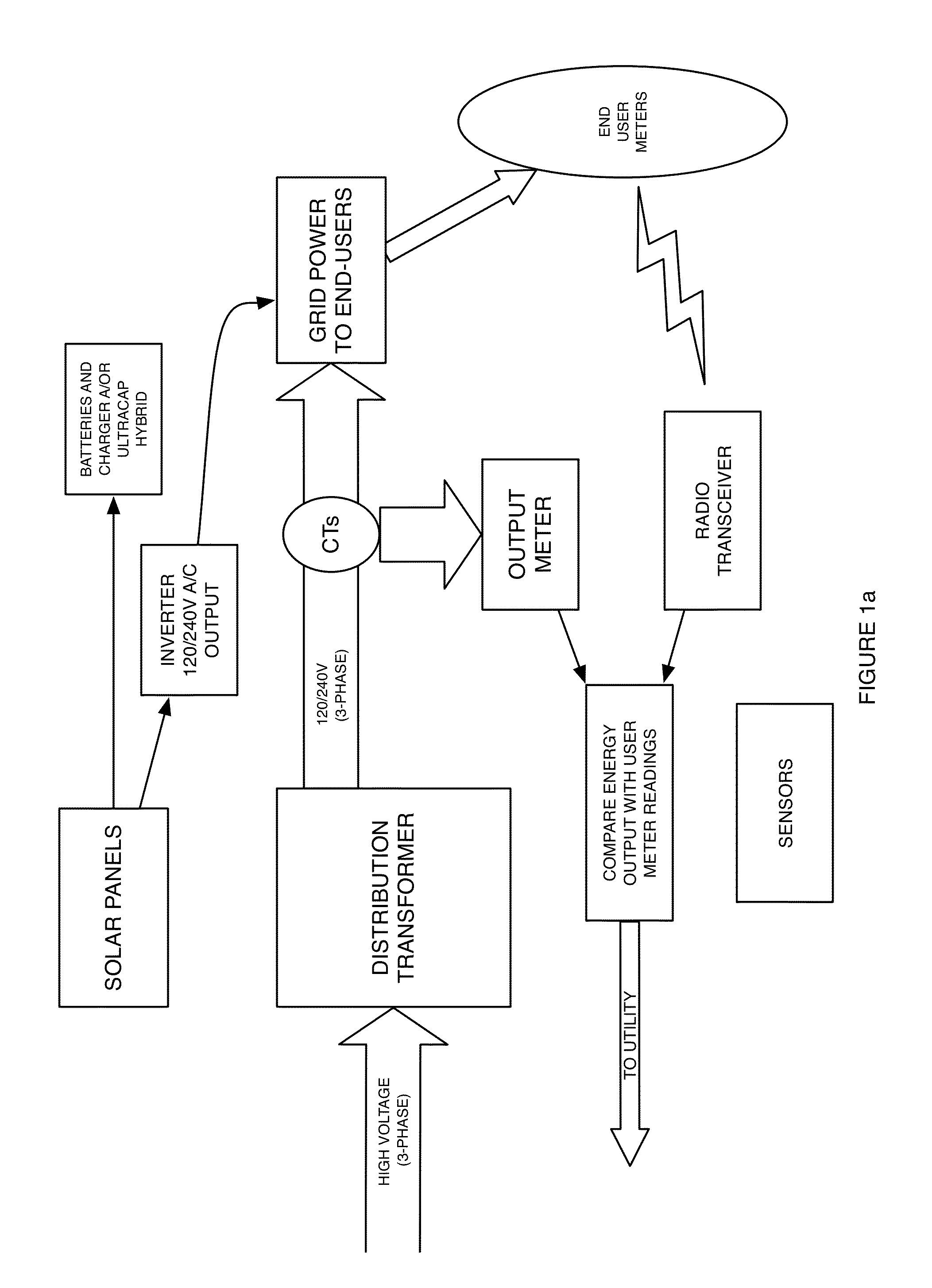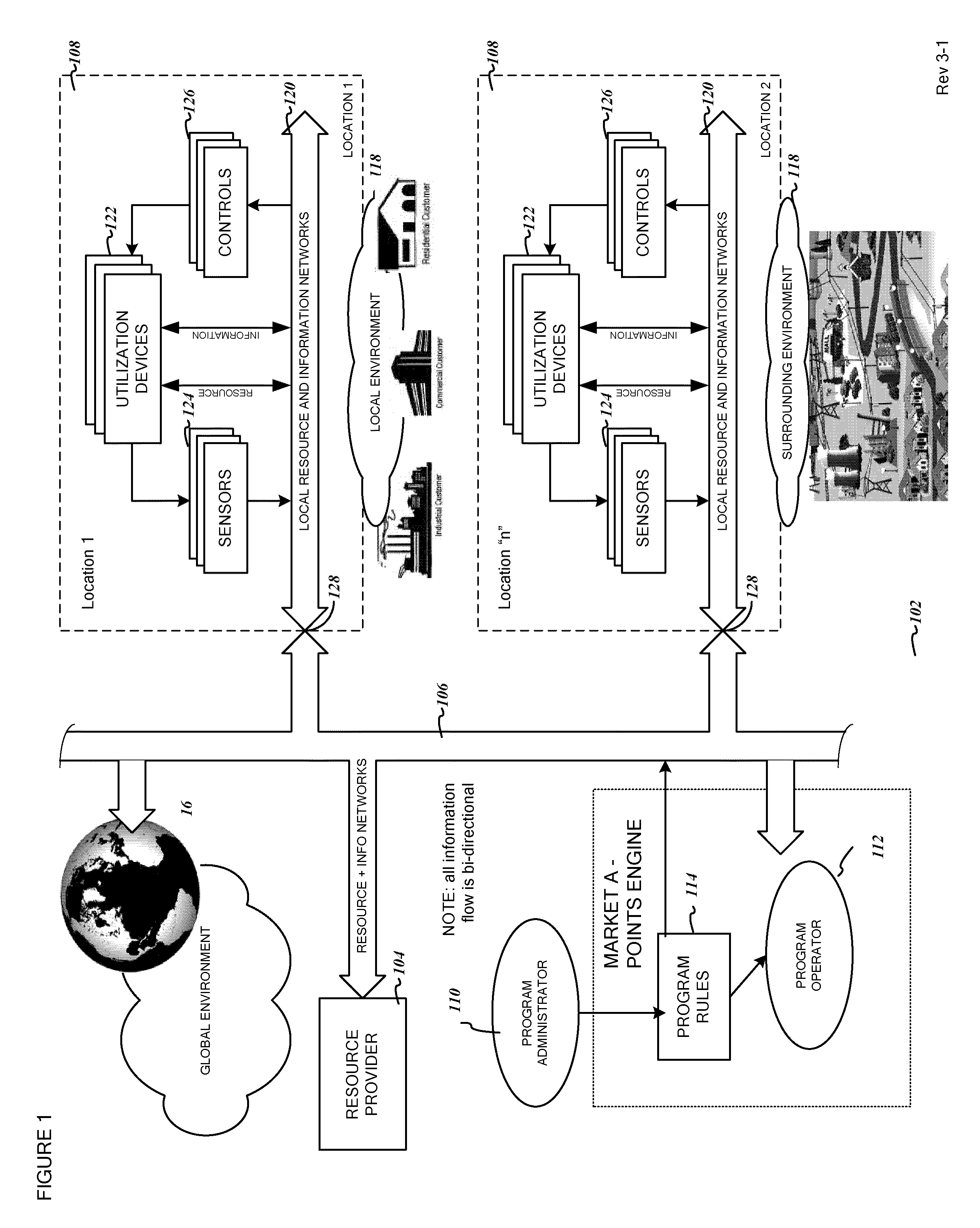In the field of electrical power distribution via a
power grid, in which
electricity is distributed to numerous customers (also referred to as end-users), various problems arise.
For example, unsafe conditions may exist at the
transformer, which must be conveyed to the repairman prior to dispatch.
Many efforts are undertaken to conserve these resources, such as fuel-efficient automobiles and so-called “green” or environmentally-friendly appliances, but there is no generalized
system to measure, motivate and reward conservation efforts that can be applied universally, even though the failure to conserve has universal
impact.
Due to rising costs of these resources, limited supplies, increasing worldwide demand and a desire to preserve the environment, end-use customers are becoming aware of the need to modify their behaviors and conserve energy and other critical resources.
However, end-use customers generally lack (a) information on their present, immediate past and predicted future
resource consumption, (b) effective means to control and automate the interaction of the complex devices and systems in the resource networks and their interactions (c) timely feedback that reflects the results of modifying their behavior, and (d) a practical program of incentives to encourage actions in support of goals such as
resource conservation and reduction of
greenhouse gas emissions.
Present technologies do not enable end-use customers to ascertain their
resource utilization on an immediate and timely basis and to use this information to intelligently and automatically manage the operation of their resource-consuming devices to meet customer goals locally while participating interactively with the larger
community and with the
resource provider to optimize the operation of the overall
system.
The customer has no conveniently available access to timely information that can easily and automatically be set-up to achieve a desired customer goals with minimal ongoing customer interaction (“set-it-and-forget-it”), no immediate feedback on the results of changes in operating behavior, no means to implement an effective conservation strategy, and little or no incentive to encourage such behavior.
It is particularly difficult to manage
resource conservation in today's market environment, since there are many complex and often inter-related variables that are involved and contribute to the availability and cost of a resource at any given moment, such as the cost of the fuel used in the production of the resource, the market price of the resource at the production or wholesale level, weather conditions that would affect resource usage, resource demand in different parts of the network, transmission constraints between locations on the network, outages at production or delivery facilities, losses due to needed maintenance on the
resource network, etc.
In addition, resource markets (such as the electricity markets), and the providers (such as the large Investor-Owned Utilities or “IOUs”) that serve the majority of customers (particularly classes of customers such as residential consumers and small commercial users), are often highly regulated, with the result that customer pricing models and rate structures may not be easily or flexibly be changed without difficult and time-consuming regulatory submissions.
These submissions may not necessarily result in approval, due to political and economic influences from outside the industry itself, and they may disproportionately serve the interests of the utilities / providers at the expense of customers, and in conflict with the larger goals of the
community or the nation.
Thus, the opportunity to make desired modifications in
resource utilization, that would result in consequent improvements in the operational efficiency, economy or reliability of the resource system, may be lost to both the customer and the provider.
For example, in the case of electricity, even though the cost for a given utility to provide electricity to a customer may be much higher at one time than another (because of increased demand, high fuel cost,
unavailability of supply, or a range of other factors influencing cost), the regulatory body that oversees and must approve the rates charged by that utility to its customers may not allow the utility to charge customer rates that vary with the
actual cost (these variable rates are sometimes referred to as “
Time of Use” or “TOU” rates, “Hourly rates”, “day-ahead rates”, “interval rates” or similar terms).
Regulatory filings to amend rates and other market factors are time-consuming processes that take place over periods of months, are expensive, and may require significant involvement by large numbers of staff, lobbyists, attorneys and witnesses, and deferral of investment in the system due to uncertainty about the regulatory treatment of those investments may result in large losses in the interim.
Thus, the utility and / or
resource provider is unable to provide a “natural” market-based incentive (i.e. based on
market dynamics that transparently reflect the interaction between supply and demand), in the way that time-variant pricing reflects the actual changing cost of the resource.
In this example, the electricity
resource provider is thus unable to encourage and reward a customer to operate an electricity-consuming device at one time (when the supplier's
electricity cost is low) rather than at another (when that cost is higher).
This distorts the economics and operations of the system, and may consequently result in undue strain on system devices and components, reduced reliability, waste of the resource itself, and other undesirable conditions on the
resource network or the environment.
Thus, under a flat-rate pricing scheme, there is no practical method to provide an effective and flexible pricing incentive for a customer to shift the air-conditioning use from a high-cost / high-demand period to a lower one, or to implement a “pre-cooling” strategy whereby the temperature is lowered beyond the customer's normal setting during an earlier period of lower-cost / lower-demand, and the air-conditioning use is then reduced when the customer enters the period of higher-cost / higher-demand, but comfort is maintained for a longer time interval, since the actual temperature will drift upward from the lower “pre-
cool temperature” to the originally-desired temperature over a period of time.
The problem is to provide a flexible, timely and widely-applicable incentive system that will encourage such behavior where the existing market and pricing system is unable to do so.
Even time-variant rate structures, such as TOU and Day-ahead hourly rates, etc., do not provide continuously-variable rate incentives, and typically incentivize meeting the goals of utilities (generally “
Demand Response” or peak reduction during approximately 80 hours in a given year) but fail to address the goals of most consumers (typically overall “Conservation” or savings 24×7 throughout the year).
 Login to View More
Login to View More  Login to View More
Login to View More 


